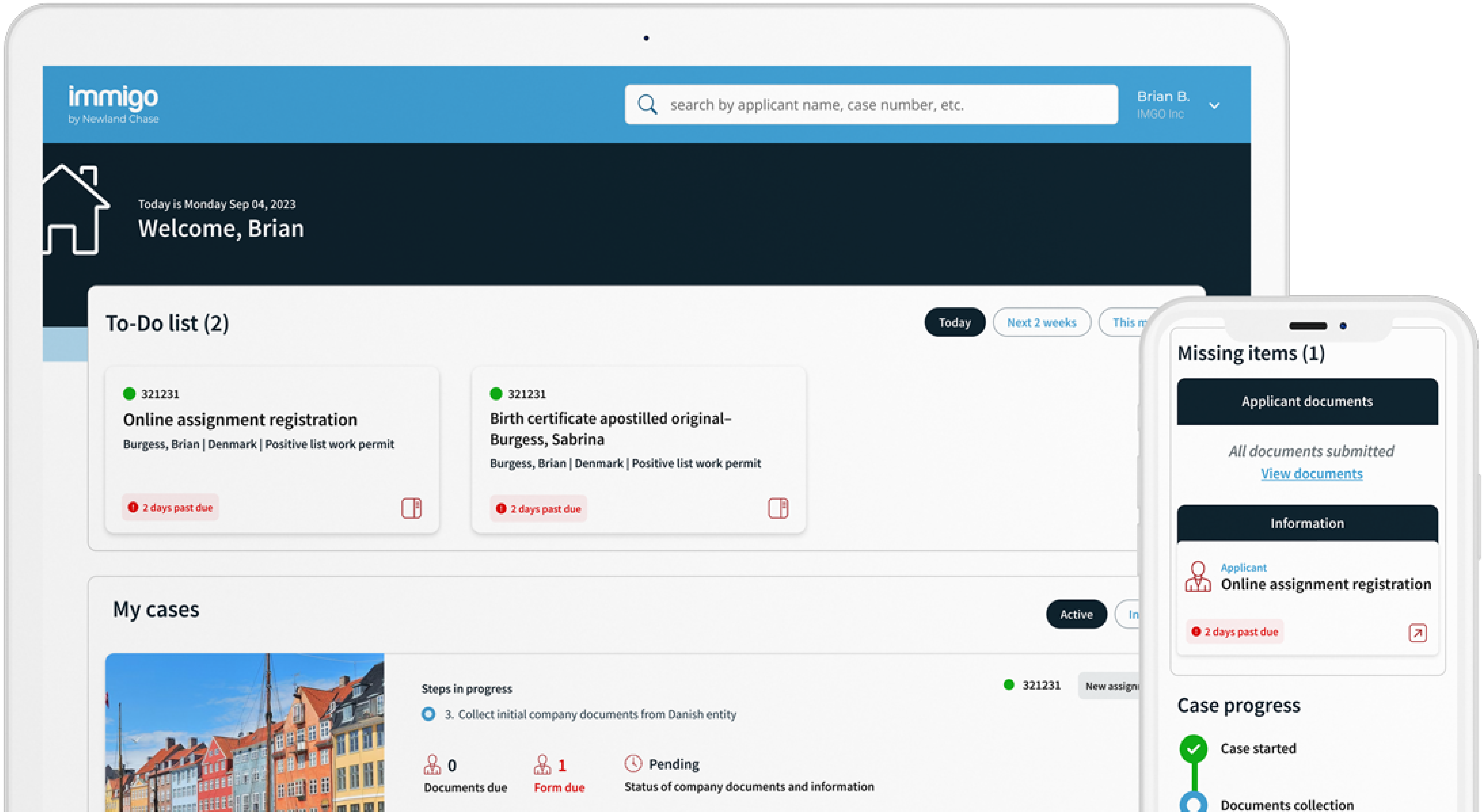Get The Visibility Your Company Needs
Reduce compliance risks and mobility costs while managing individual and project-related travel with ImmiSMART: the solution that unifies your travel and mobility programs.
Going Global: Expand Your Business to Mexico
February 8, 2019
By Kent O’Neil
There are currently 195 countries in the world in which companies may choose to do business. Successful companies looking to “go global” proactively seek out the most attractive opportunities. In making the decision of where to expand internationally, companies must consider business objectives as well as the business and legal environment of potential locations.
Follow Newland Chase’s continuing Going Global series where we take a look at a different country each time – ranking countries in tiers from 1 to 5 (with 1 being most attractive for international expansion) based on its current business climate and corporate immigration system. In this edition, we take a look at the country of Mexico.
Business Climate
Mexico is the world’s 15th largest economy according to International Monetary Fund figures. While still considered an emerging market economy, it handily beats most of its piers in the category when considering GDP per capita and size of the economy. Since the 2008 global economic crisis, its growth has been remarkably positive and steady – albeit slow – fluctuating around one percent. Most economists see growth approaching two percent for 2019.
Much of this economic stability is owed to its significant access to the world’s first (United States) and tenth (Canada) largest economies. Around 90 percent of Mexico’s exports are to the U.S. and Canada – due in no small part to the North American Free Trade Agreement (NAFTA) in place since 1994. Under NAFTA, Mexico saw exports to the U.S. and Canada triple. While the U.S.’s importance as a trading partner to Mexico is clear, the converse is also true – with Mexico being the U.S.’s second most important import and export trading partner, second only to Canada.
With NAFTA’s successful renegotiation in 2018 – assuming the ratification of the new United States-Mexico-Canada Agreement (USMCA) by the three countries’ legislatures in the coming months – this dependence, access to the U.S. and Canada markets, and resulting stability is likely to continue. One caveat to watch, however, is the extent to which some of Mexico’s concessions to the U.S. in the USMCA may curb automobile manufacturing and exports over the long-term.
Like most countries, the largest sector of Mexico’s economy is in services. However, Mexico’s industrial sector makes up almost 35 percent of GDP – significantly exceeding the percentage of nations like the U.S. (19%), Canada (29%), the UK (21%), and Germany (28%). Major industries include petroleum, automotive, electronics, aerospace, and medical devices.
Looking at a quick “snapshot” of economic indices:
- GDP growth is currently approaching two percent, rebounding from an unexpected drop close to zero in Q4 of 2018.
- The unemployment rate is low at 3.5 percent.
- Inflation fluctuated between 4.5 and 5 percent over the past year.
- Mexico’s corporate tax rate currently stands at 30 percent – while higher than the U.S. (21%) and Canada (26.5%), significantly lower than Brazil (34%).
The World Economic Forum’s 2018 Global Competiveness Report ranks Mexico 46th of 140 nations measured and ranked for attractiveness to business. Factors contributing to Mexico’s top 50 ranking are the macroeconomic stability discussed above and the sheer size of the market opportunity. Measures of infrastructure and general business and innovation capability are also notable solid scores.
The problematic factors in doing business in Mexico lie in the areas of government, the police and judiciary, and the overall impact of crime and corruption. The World Bank has estimated that systemic corruption alone may cost the Mexican economy as much as nine percent of its GDP annually. While there are many competitive advantages to locating and operating a business in Mexico, it is certainly not an easy environment to navigate without qualified in-country legal support.
Which leads to the current political situation in Mexico. On December 1, new President Andrés Manuel López Obrador (commonly referred to as AMLO) took office. His landslide election is seen by many as a pivotal point in Mexico’s political and economic environment. In the campaign, Obrador positioned himself as an outsider, a reformer, promising to address crime and corruption within government. While certainly positive for the business climate and the country as a whole, AMLO also positioned himself left of center and critical of the recent economic direction of opening, privatization, deregulation, and fiscal conservatism. Currently, business leaders are watching for signs of which direction the new administration may go over the next six years. Early signs have been mixed. Financial markets went into a tailspin in late October when AMLO canceled a huge airport infrastructure project, but then seemed to rebound in December when he submitted a fiscally conservative government budget for the coming year.
Corporate Immigration
The Mexican corporate immigration system is relatively straightforward, with essentially five categories of business- and work-related visas based on length of stay and the nature of remuneration:
- Temporary Resident (Remunerated Activities) – Valid for up to four years total, work and residence authorisation for those working in Mexico for over 180 days and hired locally;
- Temporary Resident (Non-remunerated Activities) – Valid for up to four years total, work and residence authorisation for those working in Mexico for over 180 days, but paid by an employer outside of Mexico;
- Visitor Visa (Remunerated Activities) – Work and residence authorisation for those working in Mexico for less than 180 days and hired locally;
- Visitor Visa (Non-remunerated Activities) – Work and residence authorisation for those working in Mexico for less than 180 days, but paid by an employer outside of Mexico; and
- Long-Term Visitor Visa (Non-remunerated Activities) – Work and residence authorisation for multiple stays of up to 180 days each over a ten-year period, but paid by an employer outside of Mexico.
Only the Temporary Resident (Remunerated) has a quota, with no more than ten percent of a company’s workforce allowed to be made up of foreign workers. No minimum salary thresholds apply.
Processing times for obtaining the Visitor Visa (Non-remunerated) typically average four days. Applications for the Visitor Visa (Remunerated) and Temporary Residence (Non-remunerated) typically take 30 days. Obtaining Temporary Residence (remunerated) typically takes a bit longer at around 50 days. Note that with the change of federal administrations currently taking place, some of these processing times may be temporarily longer over the next couple months. (For more information, see our alert here.)
Supporting documentation is of the usual variety with passports, IDs, photos, residence permits, CVs/resumes, education certificates, employment contracts, assignment/invitation letters, proof of accommodation and return itinerary, and corporate tax and formation documents. Originals are required for some documents. Some documents also require Apostilles/legalisations. No formal labour market tests or language tests are required.
Dependent spouses and children are allowed to accompany the primary visa holder on the Temporary Residence routes, but not on the Visitor Visa routes. However, they are not authorized to work in-country without independent authorisation.
Summary and “Going Global” Tier Ranking
Newland Chase places Mexico in Tier 2 on our Going Global Ranking. The size and stability of the market in Mexico and the access afforded to the nearby markets of the United States and Canada make it a primary business destination which should be considered by any business seeking supply and demand markets in the Western Hemisphere. Industrial infrastructure and labour supply make Mexico particularly attractive for manufacturing.
However, the legal and security environment can be challenging for those without quality in-country professional support. We are watching the new federal administration with hopes for positive changes addressing these challenges. The long-term outlook for Mexico is positive with the anticipated implementation of the USMCA in the coming months.
Looking at the corporate immigration and mobility aspects specifically – Mexico is generally open to international business, and the immigration system is relatively navigable with experienced support. No major changes in immigration policy are anticipated in the near future.
For more information on corporate immigration and work permits and business visas in Mexico, readers are invited to reach out to our Mexico City office at +52 55 5280-1233 or email [email protected]. Readers are also invited to download a free on-demand copy of our recent webinar Major in Mexico: Corporate Immigration, NAFTA and USMCA.
This blog is informational only and is not intended as a substitute for legal advice based on the specific circumstances of a matter. Readers are reminded that immigration laws are fluid and can change at a moment’s notice without warning or notice. Please reach out to your Newland Chase contact should you require any additional clarification or guidance. Written permission from the copyright owner and any other rights holders must be obtained for any reuse of any content published or provided by Newland Chase that extend beyond fair use or other statutory exemptions. Responsibility for the determination of the copyright status and securing any permissions rests with those persons wishing to reuse this blog or any of its content.




